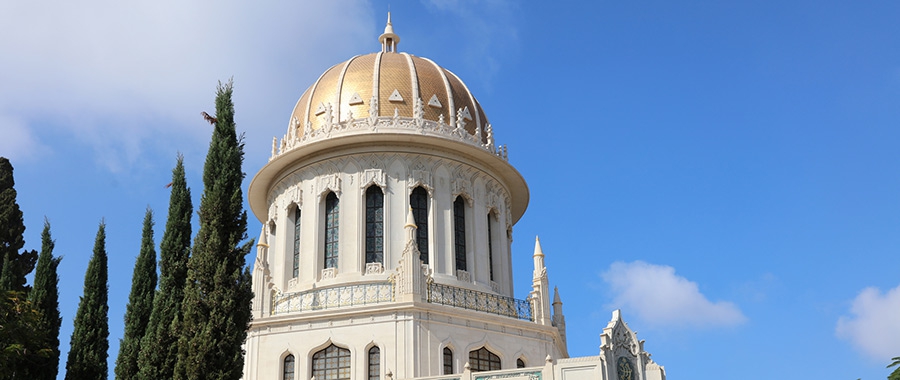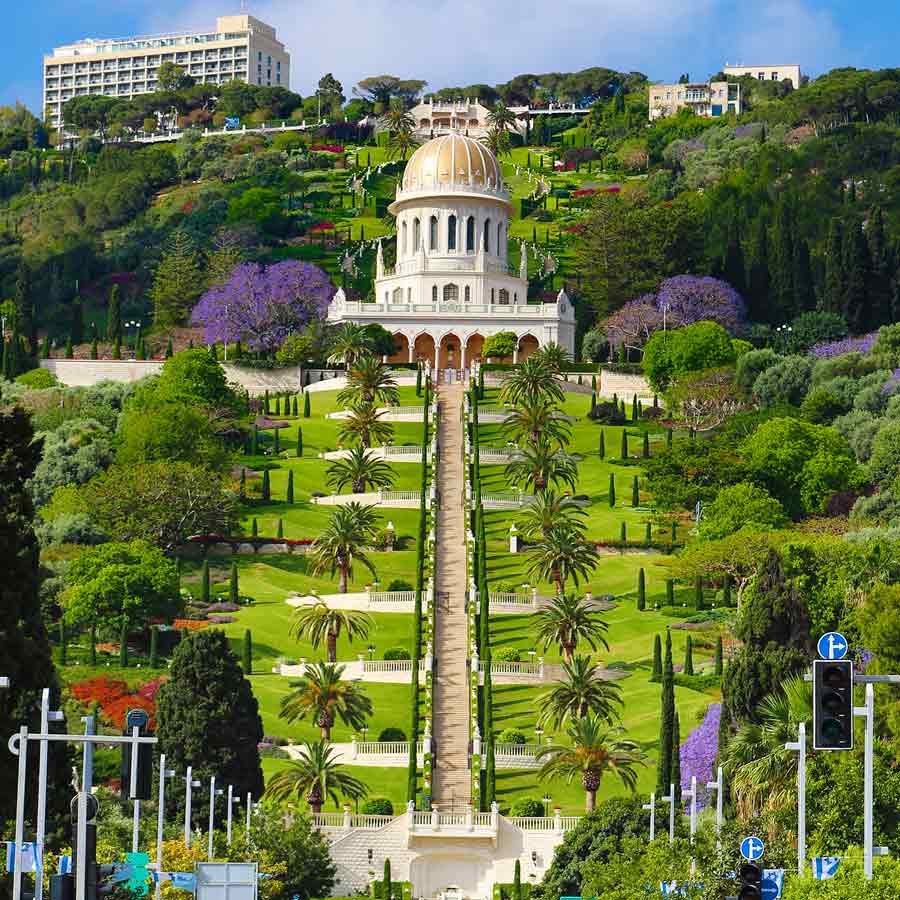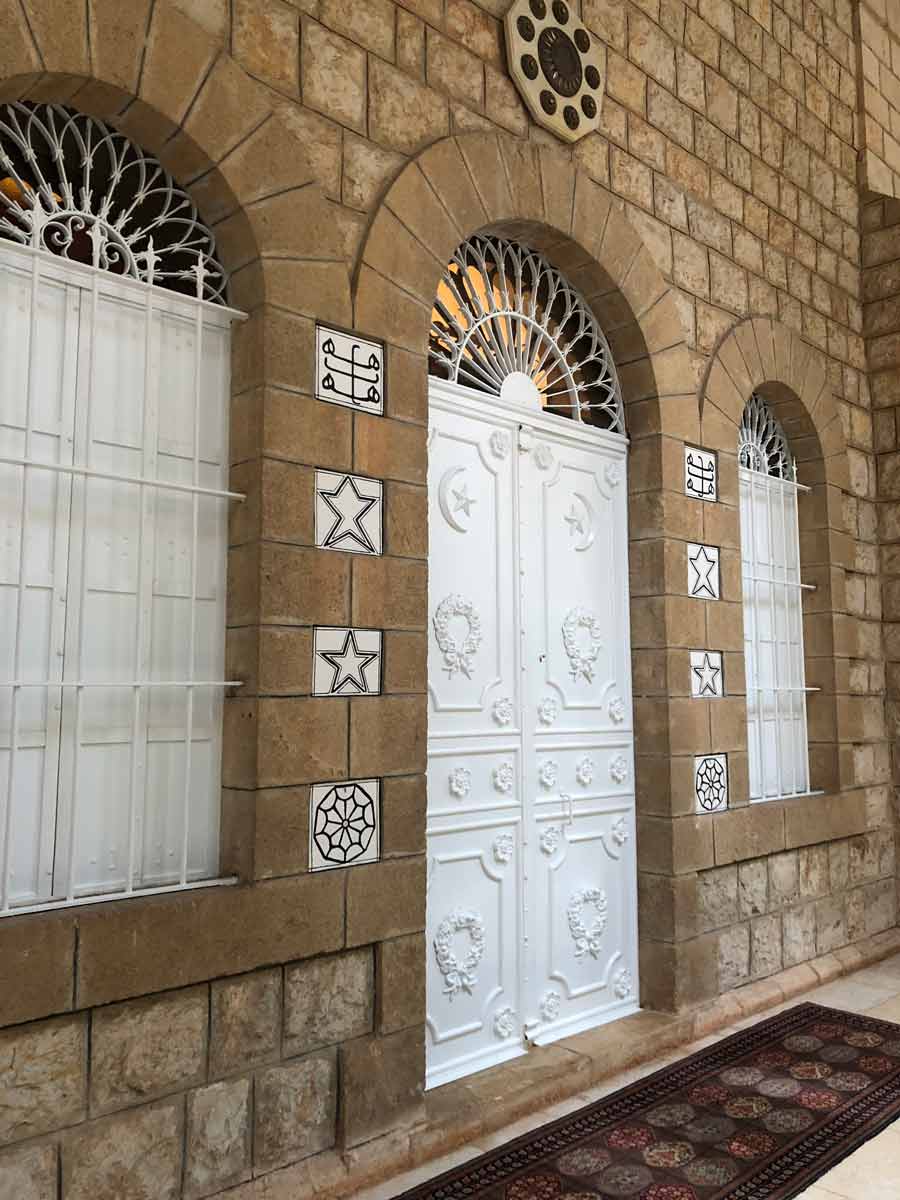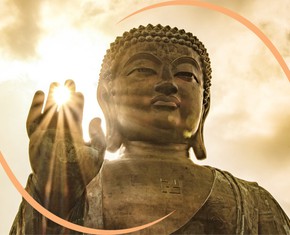The views expressed in our content reflect individual perspectives and do not represent the authoritative views of the Baha'i Faith.
Overlooking Haifa, Israel sits the Shrine of the Bab, a breathtaking and extraordinary superstructure open to people of all religions as a place of prayer and worship.
Mount Carmel, which literally means the “vineyard of God,” is the mountain in the Holy Land where the Shrine of the Bab and the seat of the world administrative centre of the Baha’i Faith are situated.
The construction of the Shrine of the Bab on Mount Carmel was ultimately completed in 1953, making it a 44-year process from when the Bab’s remains were buried in a six-room mausoleum on March 21, 1909. In November of 1921, Abdu’l-Baha was buried in an adjacent room, and the Shrine became even more significant than before.
At Abdu’l-Baha’s request, three rooms were added to the mausoleum in 1929, and Shoghi Effendi, the Guardian of the Baha’i Faith, laid the first threshold stone of the Shrine 20 years later. The construction process, a collective mission of all Baha’is around the world, was paid for entirely by the believers of the Faith. This beautiful establishment is now surrounded and adorned with 19 garden terraces.
The Shrine of the Bab is considered the second holiest place on Earth to Baha’is, after the nearby Shrine of Baha’u’llah in Bahji, Israel.
The main floor of the Shrine of the Bab consists of eight main rooms with nine doors, as one room is preceded by two doors. Although Baha’is know of the incredible architecture of the Shrine, many do not know that the entrances to each of the eight rooms are named after important and distinguished members of the Baha’i Faith. Five of the doors were named by Abdu’l-Baha, and the remaining four were named by Shoghi Effendi. Each name follows the format of “Bab-i-(Believer),” where “Bab-i” most closely translates to “door of” the believer.
Let us explore these portals to spirituality, starting with the doors named by Abdu’l-Baha and their namesakes:
- The Bab-i-Amin: named after Hand of the Cause Haji Amin (1831 to 1928)
Haji Amin was devoted to the Baha’i Faith from a very young age. He lived in a small town near Yazd, Iran called Ardikan, until Baha’u’llah’s declaration in 1863. Immediately after becoming a follower of Baha’u’llah, Amin set off to Persia to begin teaching the Baha’i Faith. As an educated man, Amin was able to earn his living by writing for the illiterate and trading with others while on the road. He was so committed to the Faith that he was known to distribute tablets written by Baha’u’llah while travelling, and was given letters to deliver from other believers who wished to write to Him.
When Amin arrived in Akka, he became the first Baha’i from outside of the city to see Baha’u’llah in the prison, and even returned several times. His devotion to the Faith was evident throughout his entire life, and after his death in 1928, Shoghi Effendi named Haji Amin as a “Hand of the Cause of God”—a special appointed institution of prominent members of the Baha’i Faith.
- Bab-i-Fadl: named after Mirza Abu’l-Fadl (1844 to 1914)
Mirza Muhammad, one of the few Apostles of Baha’u’llah who never got the chance to meet Him, is still one of the most notable Baha’i scholars. He was committed to spreading the Faith in Egypt, Turkmenistan, and America. In place of Muhammad, he chose the name “Abu’l-Fadl,” meaning progenitor of virtues, and was referred as such by Abdu’l-Baha.
Abdu’l-Baha recognized Abu’l-Fadl as having complete devotion towards the Faith. Abu’l-Fadl was also an ardent and passionate author who wrote several publications on a wide range of Baha’i subjects, that even Abdu’l-Baha himself found remarkable and impressive. Unfortunately, most of his writings were lost in the Russian Revolution. Abu’l-Fadl remained a devoted Baha’i, spending his last days in Cairo, Egypt until his death in January 1914.
- Bab-i-Bala and Bab-i-Ashraf: named after Ustad Aqa Bala and Ustad Aqa Ali-Ashraf, respectively (unknown birth and death dates)
Ustad Aqa Bala and Ustad Aqa Ali-Ashraf were brothers from Baku, Russia. With special permission from Abdu’l-Baha, they remained on pilgrimage in the Holy Land for an extended amount of time. During their stay, these two Baha’i masons dedicated time, effort, and money to the construction of the Shrine of the Bab.
- Bab-i-Karim: named after Ustad Abdu-Karim (unknown birth and death dates)
Little is known about Ustad Abdu-Karim. His birth date, death date, and burial location remain ambiguous. However, it is known that he was also a Baha’i mason who significantly contributed to the construction of the Shrine, thus, an entrance to the Shrine is named after him.
The Baha’i teachings praise scholarship, artistry and craftsmanship, making it significant that three of the five doors named by Abdu’l-Baha honor the masons who built the initial structure, and the other two recognize venerated and learned Baha’i scholars:
Knowledge is as wings to man’s life, and a ladder for his ascent. Its acquisition is incumbent upon everyone … Great indeed is the claim of scientists and craftsmen on the peoples of the world …. In truth, knowledge is a veritable treasure for man, and a source of glory, of bounty, of joy, of exaltation, of cheer and gladness unto him. – Baha’u’llah, Tablets of Baha’u’llah, p. 52.


















Comments
Sign in or create an account
Continue with Googleor